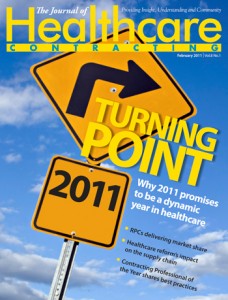 Kedrick Adkins, president of integrated services for Trinity Health, the Novi, Mich.-based health system with 46 acute-care hospitals in nine states, shared some insight into how his health system is adapting to healthcare reform changes in the latest issue of The Journal of Healthcare Contracting.
Kedrick Adkins, president of integrated services for Trinity Health, the Novi, Mich.-based health system with 46 acute-care hospitals in nine states, shared some insight into how his health system is adapting to healthcare reform changes in the latest issue of The Journal of Healthcare Contracting.
For some time prior to passage of the healthcare reform law in 2010, Trinity had lobbied for reform. Its “Find a Way” campaign called for universal coverage with uniform benefits, continuous protection and broad pooling for risk, and wellness promotion. At press time, some lawmakers were set to try to undo the law. But Adkins says that regardless of the outcome of that debate, many of the changes already precipitated by the law will move forward. In fact, the law only accelerated the pace of change that had already begun well before its passage.
“We had already initiated a lot of what we knew we had to do before the law was passed,” he says. In fact, Trinity Health has been transforming its own care delivery system for more than a decade. Some examples: Connecting the Ministry with a common electronic health record; practicing evidence-based care, for example, using data on falls and pressure ulcers to guide clinical decision-making; expanding access and extending care delivery to rural settings through the implementation of the electronic health record; and implementing innovative technologies, such as telemedicine, to ensure a prompt and effective pharmaceutical response in situations where there may or may not be a pharmacist present.
Supply chain will no doubt be a big part of how Trinity moves forward post-healthcare-reform. It already is.
“One strategic initiative [Senior Vice President, Supply Chain and Capital Projects Management] Lou [Fierens] has promoted, with a great deal of success, is the clinically driven supply chain,” says Adkins. Tying together best practices and patient-care protocols with particular types of supplies and medication, Fierens has demonstrated that highest cost doesn’t always translate to the most effective solution, he says. In addition, Fierens has spent time with various specialists demonstrating the financial impact of some of their supply and equipment decisions on Trinity.
“Supply chain leadership really needs to help healthcare and hospital systems be far more data-driven, to make sure they are making the best decisions,” says Adkins. “Recognize that what gets physicians interested are facts and good data – data that’s been cleansed, and data that relates to their individual practices and cases. It’s not enough to go in and talk to them at a high level.
“[Supply chain leaders] need to be very, very good at helping to change behavior.”
For the complete article on Adkins and Trinity Health, click here.

Be the first to comment on "Adapting to a post-reform world"